Travel Tips
Pony Express Re-enactment Races Across American West
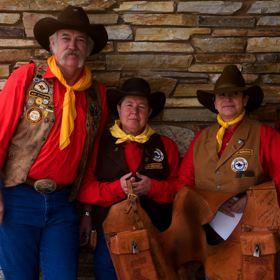 Lightning-fast communication is so much a part of 21st-century life that it’s hard to imagine a time when the mere act of sending a message was an uncertain and often precarious task.
Lightning-fast communication is so much a part of 21st-century life that it’s hard to imagine a time when the mere act of sending a message was an uncertain and often precarious task.
But in 1860 America, with Civil War brewing and the “black hole” between telegraph stations stretching almost 2,000 miles from Sacramento, California, to St. Joseph, Missouri, the entrepreneur who could bridge the gap stood to strike it rich.
Enter the Pony Express, a privately financed, high-speed mail service created by a freighting firm angling to win a U.S. mail contract connecting California and the East.
Janet Fullwood reports on the sesquicentennial celebration of this American West tradition.
Though it lasted only 19 months was a financial failure for founders Russell, Majors and Waddell, the enterprise succeeded valiantly in proving, through sheer can-do spirit, that an equestrian relay service could meet the goal of delivering mail across half a continent in just 10 days.
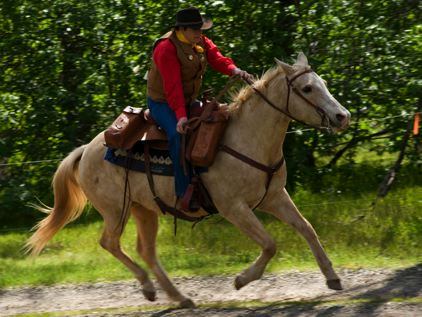 Now the Pony Express is galloping back into public view. The iconic symbol of the American West celebrates its 150th anniversary this year with a museum exhibit, celebrations in eight states and a high-profile re-enactment. From June 6-26, 550 riders, backed by a support team of thousands, will deliver a reproduction 1860 saddlebag filled with mail by ferry from San Francisco to Sacramento, then overland by horseback all the way to St. Joseph.
Now the Pony Express is galloping back into public view. The iconic symbol of the American West celebrates its 150th anniversary this year with a museum exhibit, celebrations in eight states and a high-profile re-enactment. From June 6-26, 550 riders, backed by a support team of thousands, will deliver a reproduction 1860 saddlebag filled with mail by ferry from San Francisco to Sacramento, then overland by horseback all the way to St. Joseph.
“It’s the cowboy riding fast on a horse, overcoming the elements, part of our heritage, who we are,” says Rich Tatman, California Division President for the National Pony Express Association, which is organizing sesquicentennial events.
Dive into the cultures of America & the world with Cultural Immersion.
For travelers in search of a themed cross-country road trip, the sesquicentennial offers as good an excuse as any to giddy-up along the Pony Express National Historic Trail, a driving route administered by the National Park Service.
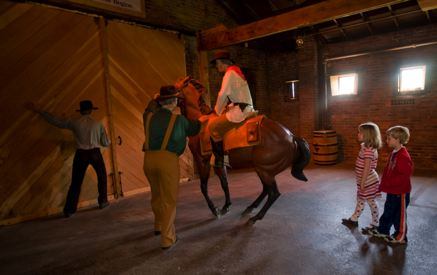 Between St. Joseph and Sacramento, travelers can follow a Hansel-and-Gretel trail of monuments, structures, museums, and scenery—some of it still achingly wild—tracing the route over which daring young riders on fast horses galloped into folklore.
Between St. Joseph and Sacramento, travelers can follow a Hansel-and-Gretel trail of monuments, structures, museums, and scenery—some of it still achingly wild—tracing the route over which daring young riders on fast horses galloped into folklore.
Those hoping to glimpse the sesquicentennial re-enactment can do so at scores of places along the route, which parallels U.S. Highways 50 and 36 for much of its length. The event, held annually, normally involves a 10-day, round-the-clock race to deliver 20 pounds of mail between Sacramento and St. Jo. This year’s ride will be stretched over three weeks and limited to daylight hours to accommodate sesquicentennial observances.
Learn more about travel in the American West here.
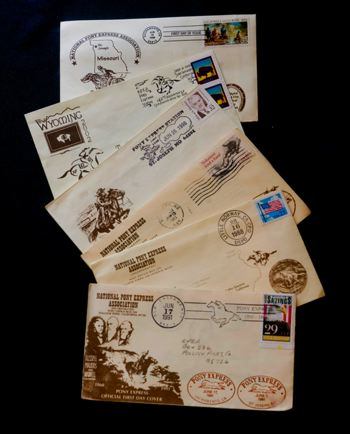 Even with sag wagons, ham radios, GPS monitoring and police escorts, the re-ride seldom comes off without incident. Bears, mountain lions and coyotes have been known to pop up along the trail, along with homeless people, shopping carts and cyclists.
Even with sag wagons, ham radios, GPS monitoring and police escorts, the re-ride seldom comes off without incident. Bears, mountain lions and coyotes have been known to pop up along the trail, along with homeless people, shopping carts and cyclists.
“Obviously we’re not being chased by Indians; we’re being chased by SUVs and Mac trucks,” Tatman says. “But how many people can say they rode on the Pony Express Trail at 2 in the morning carrying a mail pouch identical to one used in 1860? The adrenaline is flowing; the romance is there.”
WHERE TO SEE IT
The National Pony Express Association’s sesquicentennial re-ride team leaves San Francisco for St. Joseph, Missouri, on June 6. Riders will make dozens of stops along the route for photo ops and presentations.
Don’t miss Peter’s latest radio show from Yellowstone National Park.
JUST THE FACTS, MA’AM
When: The Pony Express began April 3, 1860, and was made obsolete on October 22, 1861, with completion of the first trans-continental telegraph.
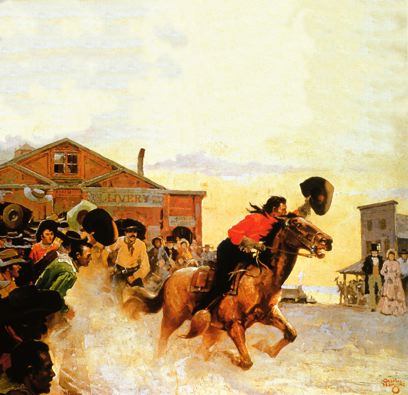 Time: Delivering mail along the 1,966-mile route between Sacramento and St. Joseph, Missouri, (with extension by steamer to San Francisco) typically took 10 days in summer, 12 in winter. A speed record of seven days, 17 hours was set with the delivery of Lincoln’s inaugural address.
Time: Delivering mail along the 1,966-mile route between Sacramento and St. Joseph, Missouri, (with extension by steamer to San Francisco) typically took 10 days in summer, 12 in winter. A speed record of seven days, 17 hours was set with the delivery of Lincoln’s inaugural address.
Riders: About 190 men, most of them teenagers, rode for the Pony Express. Weight limit was 125 pounds.
Logistics: Riders were changed out every 75 to 100 miles at “home stations,” while horses were exchanged at a series of 165 relay stations 5 to 15 miles apart.
Mail: A specialized double saddlebag called a mochilla was used to transport 20 pounds of mail, mostly business documents and news dispatches written on tissue-thin paper. Cost was $5 per half-ounce when the enterprise began, $1 per half-ounce by the time it ended. Founders Russell, Majors and Waddell are said to have lost $30 for every letter sent, but they nevertheless proved their ability to overcome formidable odds to deliver the mail on schedule.
Text and photos by Janet Fullwood for PeterGreenberg.com. Janet is a freelance writer and editor who served as the travel editor for the Sacramento Bee for 21 years. Visit her on the Web at www.janetfullwood.com.
Related links on PeterGreenberg.com:












